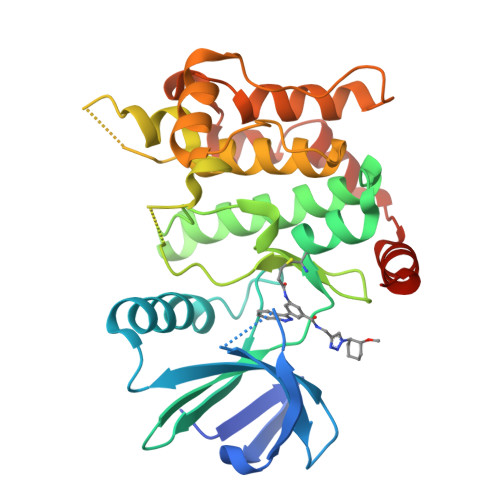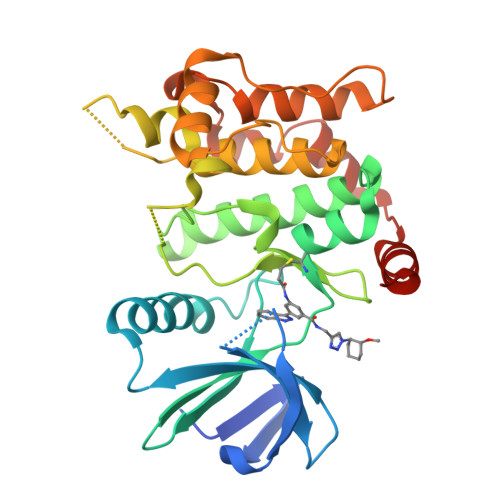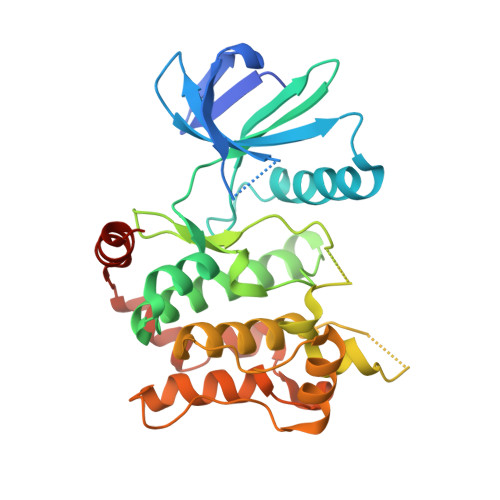Optimization of Covalent MKK7 Inhibitors via Crude Nanomole-Scale Libraries.
Gehrtz, P., Marom, S., Buhrmann, M., Hardick, J., Kleinbolting, S., Shraga, A., Dubiella, C., Gabizon, R., Wiese, J.N., Muller, M.P., Cohen, G., Babaev, I., Shurrush, K., Avram, L., Resnick, E., Barr, H., Rauh, D., London, N.(2022) J Med Chem 65: 10341-10356
- PubMed: 35912476
- DOI: https://doi.org/10.1021/acs.jmedchem.1c02206
- Primary Citation of Related Structures:
7OVI, 7OVJ, 7OVK, 7OVL, 7OVM, 7OVN - PubMed Abstract:
High-throughput nanomole-scale synthesis allows for late-stage functionalization (LSF) of compounds in an efficient and economical manner. Here, we demonstrated that copper-catalyzed azide-alkyne cycloaddition could be used for the LSF of covalent kinase inhibitors at the nanoscale, enabling the synthesis of hundreds of compounds that did not require purification for biological assay screening, thus reducing experimental time drastically. We generated crude libraries of inhibitors for the kinase MKK7, derived from two different parental precursors, and analyzed them via the high-throughput In-Cell Western assay. Select inhibitors were resynthesized, validated via conventional biological and biochemical methods such as western blots and liquid chromatography-mass spectrometry (LC-MS) labeling, and successfully co-crystallized. Two of these compounds showed over 20-fold increased inhibitory activity compared to the parental compound. This study demonstrates that high-throughput LSF of covalent inhibitors at the nanomole-scale level can be an auspicious approach in improving the properties of lead chemical matter.
Organizational Affiliation:
Department of Chemical and Structural Biology, Weizmann Institute of Science, 7610001 Rehovot, Israel.

















